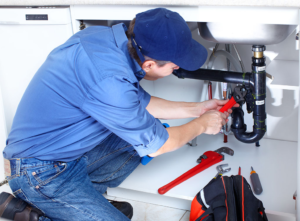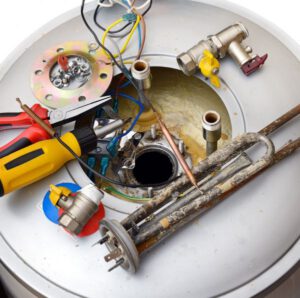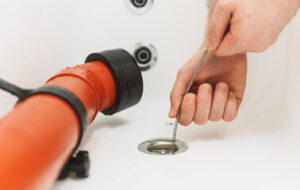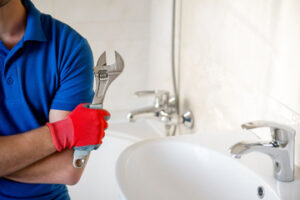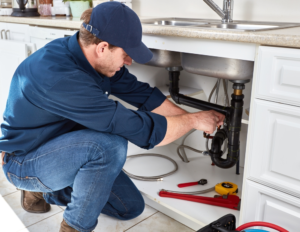Hiring Movers in Warren MI can make relocation smoother and less stressful. Moving requires careful planning and execution. Professional movers handle the heavy lifting and logistics. Their expertise ensures a more efficient transition.

The moving industry has evolved to meet changing customer needs. Modern movers offer tailored services for different types of relocations. From residential to commercial moves, they adapt to varying requirements. Custom solutions improve customer satisfaction and efficiency.
Technology has transformed how moving companies operate. Digital tracking systems provide real-time updates on shipment status. Automated inventory management ensures accuracy and reduces loss. Customers benefit from improved transparency and communication.
Packing services have become more sophisticated. Movers use specialized materials to protect fragile and valuable items. Custom crates and padding minimize the risk of damage. Careful packing ensures items arrive intact.
Professional movers offer disassembly and reassembly services. Furniture and large appliances are taken apart for safer transport. Reassembly at the destination reduces customer effort. Skilled handling prevents damage during the process.
Long-distance moves require strategic planning. Movers assess routes and traffic patterns for efficient delivery. Weather conditions and road quality are factored into the plan. Proper logistics minimize delays and complications.
Secure storage solutions have become a standard offering. Movers provide climate-controlled facilities for sensitive items. Short-term and long-term storage options offer flexibility. Secure environments protect belongings from damage and theft.
Handling delicate items requires specialized knowledge. Movers are trained to transport antiques, artwork, and fragile objects. Extra padding and careful positioning prevent breakage. Professional handling ensures preservation of value.
Pet transportation is an emerging service in the moving industry. Movers provide climate-controlled spaces for pets during transit. Proper ventilation and secure carriers keep pets safe and comfortable. Specialized care reduces stress for animals and owners.
Vehicle transportation is now more accessible. Movers use specialized carriers for cars, motorcycles, and recreational vehicles. Secure tie-downs and protective coverings prevent damage. Timely delivery ensures convenience for owners.
Eco-friendly moving options are gaining popularity. Movers use recyclable packing materials and fuel-efficient vehicles. Reduced waste and emissions support environmental responsibility. Sustainable practices meet growing customer expectations.
Customized moving plans cater to unique customer needs. Movers assess individual requirements and create tailored solutions. Flexible scheduling accommodates different timelines. Personalized service enhances the moving experience.
Senior relocation services have become more common. Movers assist with downsizing and sentimental item handling. Extra care and patience ensure a comfortable transition. Professional support reduces stress for older clients.
Handling oversized and heavy items requires expertise. Movers use hoists, dollies, and lifting straps for safe transport. Proper positioning and securing prevent shifting and damage. Skilled handling protects both items and property.
Art handling involves climate-controlled transport and protective wrapping. Movers understand the sensitivity of art materials. Controlled humidity and temperature prevent fading and cracking. Careful handling preserves artistic integrity.
Confidential business documents require secure transport. Movers use locked containers and follow strict privacy protocols. Controlled access prevents data breaches. Professional handling ensures information security.
Temporary housing support simplifies transitional moves. Movers coordinate with accommodation providers for smooth transitions. Staggered delivery options offer greater flexibility. Professional support reduces stress during interim periods.
Event setup and breakdown rely on efficient moving services. Movers transport furniture, decorations, and equipment. Quick setup ensures timely event execution. Professional handling minimizes disruptions.
Handling hazardous materials involves strict safety protocols. Movers follow regulations for transporting chemicals and flammable items. Secure containers prevent leaks and spills. Safety measures protect both property and personnel.
International moves require complex coordination. Movers manage customs documentation and compliance. Careful packing and labeling simplify customs clearance. Professional handling reduces the risk of delays.
Downsizing involves strategic packing and storage solutions. Movers help sort and prioritize essential items. Secure storage provides space for excess belongings. Professional assistance streamlines the downsizing process.
Handling musical instruments requires precision and care. Movers use padded covers and custom cases for protection. Controlled transport prevents damage from vibrations. Professional handling preserves sound quality and structure.
Military relocations demand efficiency and confidentiality. Movers handle personal belongings and sensitive documents with care. Fast response times accommodate tight schedules. Reliable service ensures smooth transitions.
Flexible payment options have become more available. Movers offer installment plans and customized pricing packages. Transparent terms prevent hidden fees. Flexible options accommodate different financial situations.
Handling electronics requires specialized techniques. Movers use anti-static packaging to prevent damage. Controlled transport conditions protect sensitive circuits. Professional handling ensures operational reliability.
VIP moving services provide high-end customer experiences. Personalized packing and transport cater to premium needs. Exclusive services include white-glove handling and custom scheduling. Luxury treatment enhances customer satisfaction.
Seasonal moving patterns influence service availability and pricing. Movers adjust schedules to accommodate peak demand. Early booking ensures preferred dates and rates. Planning around seasonal trends improves cost efficiency.
Handling office relocations requires detailed coordination. Movers transport furniture, equipment, and sensitive documents. Timely setup minimizes business disruption. Professional service ensures a seamless transition.
Real estate staging often involves professional movers. Quick transport of furniture and decor enhances property presentation. Efficient setup creates a welcoming atmosphere. Professional handling supports successful staging.
Handling film and television production equipment requires precision. Movers transport set pieces and technical gear. Careful handling prevents damage and ensures timely setup. Professional service supports production efficiency.
Disaster recovery support includes moving services. Movers help salvage and relocate damaged items. Secure storage protects belongings during recovery. Fast response supports a quicker rebuilding process.
Handling antique furniture requires specialized care. Movers use protective padding and climate-controlled transport. Proper handling prevents warping and surface damage. Expert techniques preserve the condition of valuable pieces.
Personalized customer service enhances the overall moving experience. Movers provide clear communication and regular updates. Responsive service addresses customer concerns quickly. Professionalism builds trust and confidence.
University and student moves require flexibility and affordability. Movers handle dorm furniture and personal belongings. Coordinated schedules align with academic calendars. Professional support ensures smooth transitions for students.
Handling heavy machinery and industrial equipment requires specialized knowledge. Movers use cranes and heavy-duty straps for transport. Proper securing prevents shifting and damage. Professional handling ensures safe delivery.
Storage-in-transit options provide added flexibility. Movers offer short-term holding during complex moves. Secure facilities protect items from damage and theft. Flexible solutions accommodate unexpected delays.
Handling confidential medical equipment requires precision and security. Movers use sterile packaging and climate-controlled transport. Secure handling prevents contamination and damage. Professional service ensures operational integrity.
Handling trade show equipment requires fast and reliable transport. Movers manage display materials and promotional items. Quick setup ensures a professional presentation. Efficient handling supports successful events.
Handling sports equipment involves proper securing and protection. Movers use padded covers and secure strapping. Controlled transport prevents damage from impact. Professional handling ensures equipment readiness.
Handling construction materials requires heavy-duty transport solutions. Movers use flatbeds and cranes for large materials. Proper securing prevents shifting during transit. Efficient handling supports construction timelines.
Eco-friendly disposal of packing materials reduces environmental impact. Movers offer recycling services for used materials. Responsible disposal supports sustainability efforts. Professional movers prioritize environmental responsibility.
Handling retail inventory relocations requires accuracy and speed. Movers manage stock and store fixtures with care. Efficient transport minimizes business downtime. Professional handling ensures inventory accuracy.
Handling luxury items requires premium service and discretion. Movers provide custom crates and secure transport. Climate-controlled conditions preserve item integrity. Professional handling ensures flawless delivery.
Handling hotel and hospitality industry moves requires strategic coordination. Movers transport furniture, equipment, and decor. Efficient setup minimizes disruption to operations. Professional handling ensures a smooth transition.
